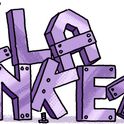© PA Images
When most people take a new job, they prepare a to-do list of their goals and immediate priorities. Rarely, though, is the list as long as Janet Yellen’s, as she prepares to take over as Chairman of the Federal Reserve, with her first policy meeting as chair in March.
Yellen, 67, formerly the Chairman of the regional San Francisco Fed, will occupy the most important position in the US and global economy; her decisions could have immediate effects on borrowers, businesses and governments around the world.
Her appointment was the subject of intense debate, not least because she was not the first choice. President Barack Obama originally wanted Lawrence Summers, the former Treasury Secretary, but Summers’s past enthusiasm for financial deregulation, among other factors, ruled him out. Yellen’s emergence as front runner alarmed some because of her Keynesian views: she believes in the ability of government to intervene in the business cycle, an unusual view among Fed Chairmen. She also helped to oversee the Fed’s programme of quantitative easing, the biggest economic experiment of recent times.
Yellen will face big challenges: from unwinding that policy of quantitative easing, to fostering expansion in the world’s largest economy, and steering the policymaking Federal Open Market Committee (FOMC). The job also requires her to take a very public role as the face of one of the most influential organisations in the financial world.
About 50 years of studying economics will help. Born in Brooklyn, Yellen graduated with an economics degree from Brown University in 1967 and got her PhD from Yale. She taught at Harvard and, after a stint at the Federal Reserve Board of Governors, went on to teach at Berkeley. She became President of the San Francisco Fed in 2004, voicing concerns early on about the jump in home prices and national economic stability, returning to the Fed as Vice-Chair in 2010.
First, Yellen must reduce the policy of quantitative easing. Under Ben Bernanke, the FOMC began reducing in December, announcing that it would “taper”—reduce bond purchases—from $85bn a month to $75bn in January. The FOMC also said it would likely reduce it further in “measured steps at future meetings,” adding that the pace depends on job numbers and inflation, which together make up the Fed’s dual mandate. But so far it has not met either part of its mandate—unemployment too high and inflation too low.
Now that the process of reduction has begun, Yellen will need to manage the pace, eventually reducing bond purchases to zero. There’s a lot riding on this. The US has just emerged from its deepest downturn since the Great Depression. While the recovery has strengthened—growth is now at 2.3 per cent—that is half the average of 4.6 per cent during recoveries since 1959. Fed decisions on how soon to take away the proverbial punch bowl will have profound consequences.
Yellen’s next task will be to determine how to pare back the Fed’s balance sheet, which has swelled to a record $4 trillion (about 24 per cent of GDP), from less than $1 trillion before the crisis. There is no easy exit. It could take years to get the balance sheet back to normal and since the Fed owns a significant amount of government debt, any move to sell could ripple through financial markets. But holding on to that debt would make it harder to deal with a future crisis.
Yellen will have to determine whether to keep interest rates at zero, which depends on the strength of the jobs market and on inflation. Under Bernanke, the bank set an unemployment threshold of 6.5 per cent—below this, the Fed would raise interest rates. Bernanke adjusted that threshold downwards and Yellen may need to do the same. She may also have to adjust the threshold around the Fed’s inflation target, which is presently 2 per cent. Inflation is stubbornly below that target."
Yellen must articulate decisions clearly to the markets—a role she is well-suited to play. The communications strategy, or “forward guidance,” that she championed is a key component of the Fed’s toolkit and explains why monetary policy has been so effective. Good forward guidance encourages people to invest and spend—and the Fed saying that it will let inflation climb encourages this.
Yellen’s wealth of experience, as San Francisco Fed Chair and Fed Vice-Chair since 2010—will give financial markets a sense of continuity and, given the uncertainty of Washington politics, this is much needed.
Finally, Yellen is not as doveish as people think. While she favours generally accommodative policies, she also played a key role in establishing the Fed’s inflation target and unemployment thresholds.Nor has she ever dissented in favour of a looser policy. In 1996, as a Fed Governor, she threatened to dissent from statements in favour of tighter policy—at a time when dissents were rare. Once the economy is past the disruptions caused by Washington, Yellen’s enhanced role will support the economic recovery.
Beth Ann Bovino is Chief US Economist at Standard & Poor’s












